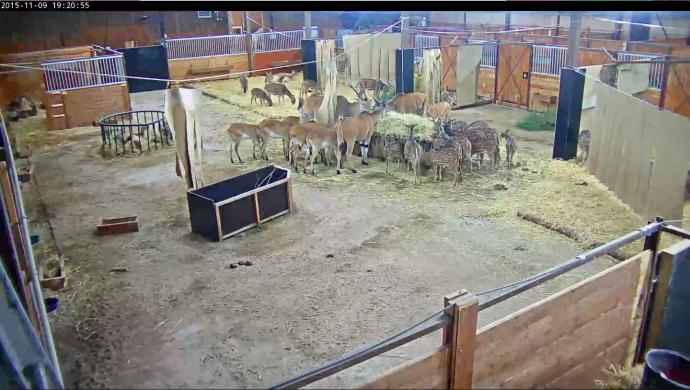On this webpage I present some of the resuts from my study, for compleate results and discussion make sure to download and read the report on the link "download". Thank you!
Introduction
In this project a surveillance system based on web cameras, connected to the internet via a 3G modem, were tested and used to evaluate new mixed-species combinations in two indoor winter quarters. Here two groups of four and two species of herbivores were housed together. They share a very large outdoor exhibit more or less around the clock during the summer and several hours per day during fall, winter and spring, when weather permits. Before this study, the animals were housed in smaller stalls, with groups of one species held together.
A number of researchers argue that competition is increased when feed is placed in a small area leading to lower feeding opportunities for subordinate individuals. They therefore suggest that feed should be put in a number of different places in the enclosures to decrease the opportunities for conflicts and thereby create a greater equity among the species Looking at the nutrition and amount of feed, it is normally calculated by the staff but in mixed-species groups it is hard to evaluate the exact intake of each animal. If the animals do not get the nutrition they need it has a direct effect on the physical condition of the animals and consequently also on fitness and their reproductive ability. It is therefore a necessity for each animal to be able to feed as it pleases.
There have been few studies made on interspecific aggression among ungulates, and especially with more than two species. Most studies made has had different and conflicting outcomes.
In this study there are two different enclosures with different species combinations of different sizes and sexes. In one of the free stalls antelope species were kept together: common eland antelope, Letchwe water buck, blackbuck, and one species of deer, the chital. In the other free stall Grevy’s zebras were kept together with brindled wildebeest.
By using the cameras, it was possible to study the animals without human interaction or human influence and also by night, with the compartments illuminated with IR lights
AIM
The aim of this study was to evaluate the welfare of the animals by measuring possible interspecific aggression and to control that all animals got the opportunity to feed and sleep without interference. Also to provide feedback to the LiU staff on the functionality and reliability of the camera system.

Responsible for this page:
Director of undergraduate studies Biology
Last updated:
06/15/16
